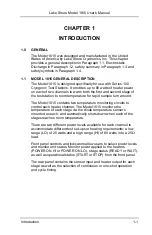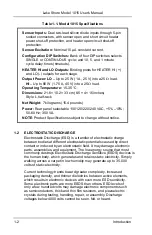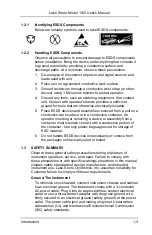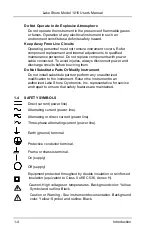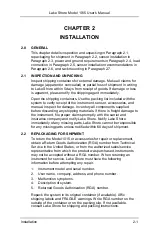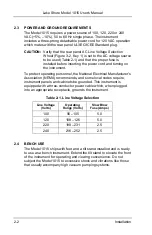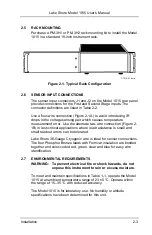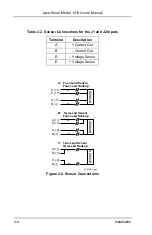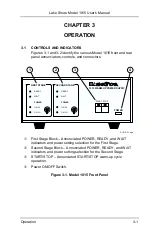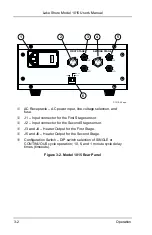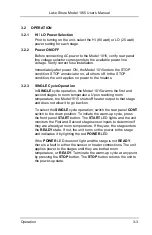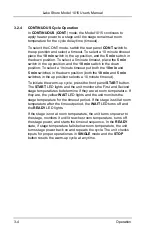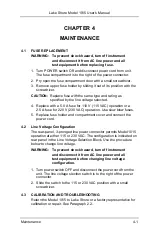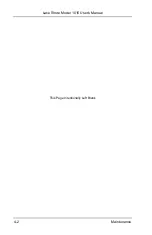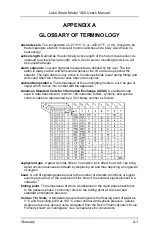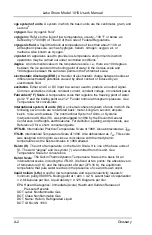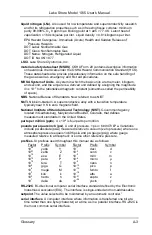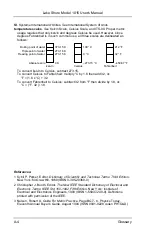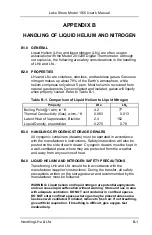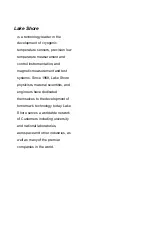
Lake Shore Model 1015 User’s Manual
Glossary
A-1
APPENDIX A
GLOSSARY OF TERMINOLOGY
absolute zero
. The temperature of –273.15 °C, or –459.67 °F, or 0 K, thought to be
the temperature at which molecular motion vanishes and a body would have no
heat energy.
1
active length
. Defined as the electrically active length of the helium level sensor. As
opposed to actual physical length, which, due to sensor mounting provisions, will
be somewhat larger.
alarm setpoints
. Low and high alarm setpoints are defined by the user. The low
alarm is always active and will sound whenever the LHe level drops below the
setpoint. The high alarm is only active in Continuous Mode (used during filling) and
will sound when the LHe level rises above the setpoint.
ambient temperature
. The temperature of the surrounding medium, such as gas or
liquid, which comes into contact with the apparatus.
1
American Standard Code for Information Exchange (ACSII)
. A standard code
used in data transmission, in which 128 numerals, letters, symbols, and special
control codes are represented by a 7-bit binary number as follows:
asphyxiant gas
. A gas which has little or no positive toxic effect but which can bring
about unconsciousness and death by displacing air and thus depriving an organism
of oxygen.
baud
. A unit of signaling speed equal to the number of discrete conditions or signal
events per second, or the reciprocal of the time of the shortest signal element in a
character.
2
boiling point
. The temperature at which a substance in the liquid phase transforms
to the gaseous phase; commonly refers to the boiling point at sea level and
standard atmospheric pressure.
Celsius (°C) Scale
. A temperature scale that registers the freezing point of water as
0 °C and the boiling point as 100 °C under normal atmospheric pressure. Celsius
degrees are purely derived units, calculated from the Kelvin Thermodynamic Scale.
Formerly known as “centigrade.”
See
Temperature for conversions.

